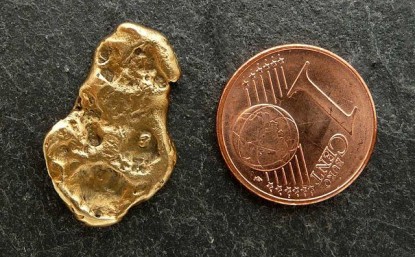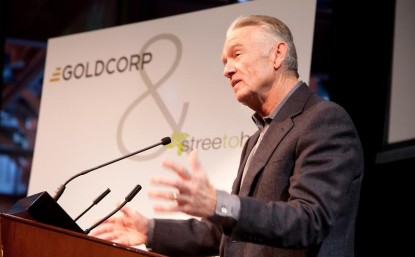
The recent fall in gold prices has dampened its prospects for 2017 by analysts like BMO Capital Markets, which is forecasting prices to hit $1,175 an ounce next year, down sharply from the $1,413 BMO previously called for. The yellow metal has come under pressure since the U.S. election thanks to a stronger dollar and expectations of higher interest rates in 2017. The Federal Reserve raised rates a quarter point, citing a strengthening economy and better jobs numbers. When rates are climbing, gold becomes a less attractive investment, in part because it’s not yield-producing.
Gold is still up for the year by 7.4%, but earlier in the year, it was up three times that much. Precious metals are highly sensitive to interest rate hikes, which tend to boost the value of the dollar against commodity prices. There could be as many as three interest rate hikes in the U.S. next year, which has increased bullish sentiment for the greenback. Consider that the U.S, dollar hit an all-time high in February 1985 during which time gold hit a bottom of $284.25 an ounce.
The U.S. dollar, as measured against a basket of currencies, has been on a tear since Donald Trump’s victory in the presidential elections, hitting 14-year highs. Conversely, gold on the Comex market in New York has dipped to $1,138.80 an ounce, levels not seen since the beginning of February this year.
BMO’s forecast wasn’t entirely bearish saying, “in our view, global political uncertainty combined with the fragility of economic recovery within Europe and continued quantitative easing continue to be supportive of precious metals when the markets refocus on these systemic risks.” Furthermore, BMO argues that markets have already priced in the impact of the rate hikes expected to take place in 2017.
Underscoring the number of unpredictable factors currently influencing gold, Goldcorp Chairman of the Board and Director, Ian Telfer, who was interviewed by MiningFeeds earlier this year, says 2016 will go down as a volatile year as far as commodity prices are concerned.
“There’s been a number important factors that have fueled that volatility, among them expectations of higher interest rates and some political developments that moved the market,” Ian Telfer commented.
After more than 35 years in the mining industry, Telfer says the business was more fun when prices were $1,800.00 U.S. an ounce, but no one can control that.
“If you’re in business long enough, you learn to ride these market ups and downs, knowing full well history tends to repeat itself,” he added.

Egon von Greyerz is the founder and Managing Partner Matterhorn Asset Management. He told reporter Greg Hunter he is focussed on wealth preservation and sees physical gold as a way to protect value.
“This year, we went up to over $1,300, and now we are back down to $1,100 and change today. If you are buying gold for wealth preservation, you know what you are looking at on a computer screen is not the real price of gold, just the paper price of gold and the manipulation of gold,” he said.
Von Greyerz says the market price has little to do with the true value of physical gold, as far as paper currencies is concerned. Paper is one thing — physical gold is something much more enduring, according to precious metals investors. He says long term investors don’t fret about fluctuating prices.
Precious metals speculators hopeful of a rally got a significant one in the first half of the year and may be feeling disappointed about the drop in price over the last two months of 2016.
For those who are into gold for the long haul, the same economic factors that have attracted investors to precious metals over the decades are still very much in place and will remain so in 2017.



 Follow us on Twitter
Follow us on Twitter Become our facebook fan
Become our facebook fan









Comments are closed.